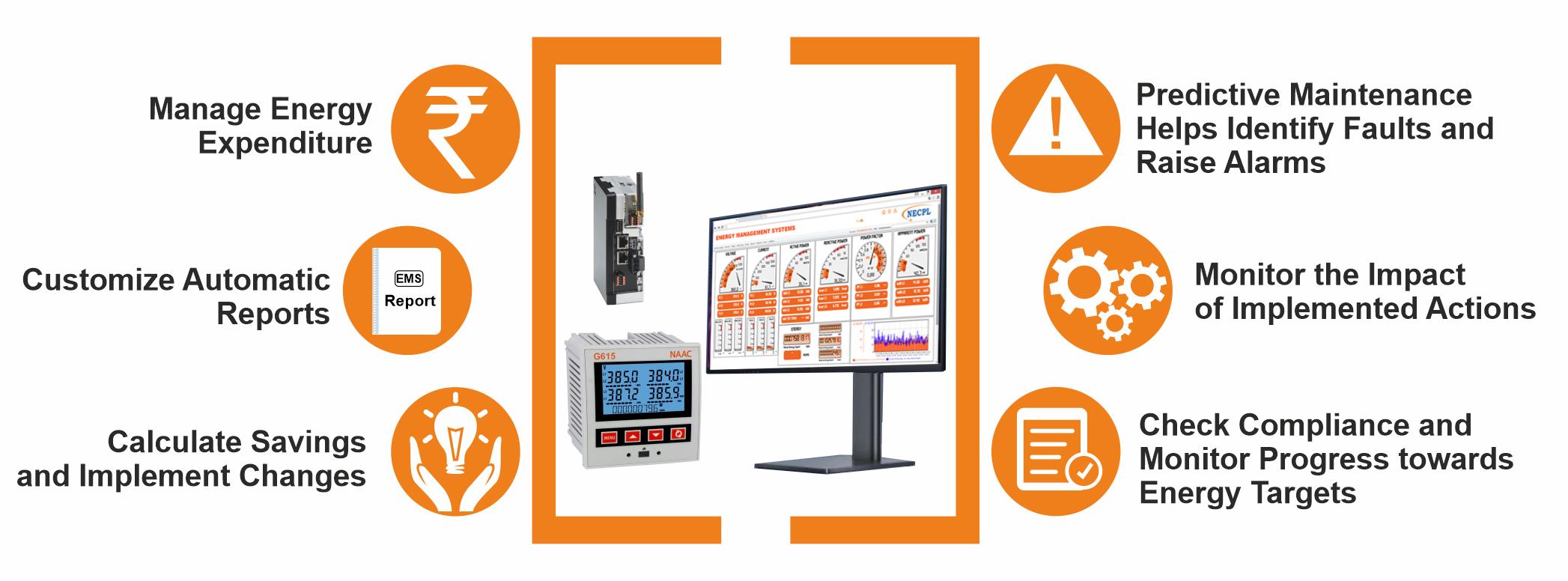What is An Energy Management System (EMS) ?
Energy Management System (EMS) is a comprehensive framework and set of practices designed to optimize the utilization, monitoring, and control of energy resources within an organization or facility. It plays a pivotal role in achieving energy efficiency, sustainability, and cost savings. It is crucial for monitoring, optimizing, and controlling energy usage in various settings. Energy Management Systems caters to diverse sectors and applications, each with its unique focus on energy conservation, optimization, and sustainability. Selecting the appropriate type of EMS depends on the specific requirements and goals of the organization or system it serves.

Let’s have a look at the overview of key aspects and components of Energy Management System
Energy Monitoring and Data Collection: First step in energy management is collection of detailed data on energy consumption and usage patterns. This data is gathered from various sources, including meters, sensors, and utility bills. It serves as the foundation for informed decision-making.
Analysis and Benchmarking: Once data is collected, it is analyzed to identify trends, anomalies, and areas of inefficiency. Benchmarking against industry standards or past performance helps in setting realistic energy management goals
Energy Efficiency Measures: Based on the findings of the EMS and data analysis, organizations implement various energy-saving measures. These may include upgrading lighting systems, HVAC systems, adopting renewable energy sources, or optimizing manufacturing processes.
Monitoring and Control Systems: EMS includes the implementation of monitoring and control systems that allow real-time tracking of energy consumption. These systems enable immediate response to deviations from set energy targets.
Reporting and Documentation: Regular reporting on energy consumption, savings, and progress towards goals is a fundamental aspect of EMS. Comprehensive documentation ensures transparency and accountability.
Regulatory Compliance: Compliance with energy-related regulations and standards is a critical component of EMS. Staying in line with legal requirements helps avoid penalties and reputational risks.

Return on Investment (ROI): Energy efficiency measures often require an initial investment. EMS calculates the ROI of these measures, showing the financial benefits over time, including energy cost savings and potential incentives or tax credits.
Sustainability and Environmental Impact: Beyond cost savings, EMS contributes to sustainability goals by reducing carbon emissions and the overall environmental impact of an organization’s operations.
Energy Efficiency and Cost Savings: Reduced energy consumption leads to lower utility bills for both individuals and businesses. Lower energy costs can stimulate growth.
Environmental Impact Reduction: Decreased energy consumption results in reduced greenhouse gas emissions, mitigating climate change effects. efficient energy usage leads to improved air and water quality, benefiting public health. Efficient energy management can reduce the risk of energy supply disruptions
Technology Advancements: The development and adoption of energy-efficient technologies drive innovation and technological progress. This can lead to new business opportunities and improved productivity.
Conclusion
In a nutshell, Energy Management System are a holistic approach to optimizing energy use within an organization. It combines data analysis, goal setting, technology, employee engagement, and continuous improvement to reduce energy consumption, lower operational costs, and improve enhance productivity. Implementing EMS not only benefits an organization’s bottom line but also contributes to a more sustainable and environmentally responsible future. It’s adoption is a crucial step toward to a more sustainable and resilient future.



